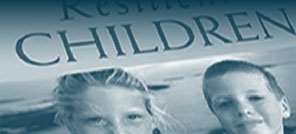We are very happy that you like sharing articles from the site. To send more articles to your friends please copy and paste the page address into a separate email.Thank You.
Printer-Friendly Version | Email Article
 I hope that you’ve had an opportunity for relaxation and re-charging since my last article appeared in June. I’m aware, however, that some of my readers have experienced the impact of fires, tornadoes, flooding, and intense, unrelenting heat. My thoughts and prayers are with those who have lost loved ones, homes, and businesses as a result of these disasters.
I hope that you’ve had an opportunity for relaxation and re-charging since my last article appeared in June. I’m aware, however, that some of my readers have experienced the impact of fires, tornadoes, flooding, and intense, unrelenting heat. My thoughts and prayers are with those who have lost loved ones, homes, and businesses as a result of these disasters.
The Background for this Article
This article is co-authored with my colleague and close friend Sam Goldstein. As many of you know, Sam and I have maintained a collaboration for more than 30 years. In our book Tenacity in Children: Nurturing the Seven Instincts for Lifetime Success, we describe details of this collaboration and the changes that have transpired since we first began our careers as psychologists, especially moving from a deficit to a strength-based model. During this lengthy and rich collaboration, we have spent hundreds of hours sharing ideas as we co-authored many book and book chapters.
I was just beginning to consider a topic for this month’s article when Sam and I received a request from ParentMap, a group that has invited us for a third time to be interviewed for a podcast as part of their ParentEd Speakers series. They asked if we might submit an article in anticipation of our interview on October 24. As a possible topic, Sam sent me an essay that he had been writing considering the qualities that make us human. I was intrigued by the five attributes that Sam selected, attributes that we have described to a greater or lesser extent in our books. After reading Sam’s piece, I agreed to add some recommended strategies parents might use to nurture these attributes in their children. I included these strategies, and Sam suggested that similar to what we have previously done, we should as co-authors send out and post this article on our respective websites, in addition to it being posted on the ParentMap website.
The Question We Pose
What makes us human? A simple answer from a genetic perspective is our 23 pairs of chromosomes containing countless genes. However, as most of us realize, this definition falls far short of appreciating the complexity of our minds and existence. As members of the human species, we possess a unique set of features that defines our reality and sets us apart from all other living beings on Earth. Being human encompasses a rich tapestry of qualities that shape our thoughts, emotions, and actions. In what follows, we explore and define five of the most important qualities of being human: consciousness, empathy, creativity, resilience, and the pursuit of meaning and purpose. We will make a case for the significance of these qualities throughout our lives and briefly describe ways in which parents and other caregivers can nurture these five in children, a truly essential task.
Consciousness
Consciousness lies at the core of our existence as humans. It is the capacity to be aware of ourselves, our surroundings, and our internal experiences. This self-awareness gives us the ability to reflect on our thoughts and emotions, contemplate our actions, and engage in critical thinking. Consciousness enables us to explore our inner world, understand our motivations, and ponder the mysteries of life.
Human consciousness is not limited to mere self-awareness but also includes awareness of others and the world around us. This heightened consciousness allows us to empathize with others, connect on emotional levels, and form meaningful relationships. It is the driving force behind our desire to seek knowledge, explore the universe, and make sense of the complexities of existence.
The development of consciousness is rooted in the early attachment children have with the significant adults in their lives. Hugging and holding an infant or toddler and playing such well-known games as peek-a-boo helps children to differentiate themselves as individuals, separate from their parents. As parents speak and interact with their child, language begins to develop, a powerful tool to reinforce consciousness, awareness, and the self as a separate entity. In this regard, listen to how often toddlers use the word “me” in communicating their needs and what they want.
Empathy
In our book Tenacity in Children, we position “Compassionate Empathy” as an inborn instinct, defining empathy “as the ability to understand the world of others on both cognitive and affective levels” and compassion as “calling on that understanding to initiate actions that express caring towards others.”
Empathy is a fundamental aspect of being human and fosters compassion, kindness, and a sense of interconnectedness with all living beings. Through empathy, we form strong social bonds, nurture relationships, and build communities based on mutual support and understanding. It serves as the foundation for cooperation, altruism, and the ability to address societal challenges collectively. Empathy reminds us that we are not isolated individuals but interconnected beings, and our actions can profoundly impact the lives of others.
We advocate that parents find realistic opportunities for children to enrich the lives of others from an early age. It is also essential that parents model empathy and compassion in the ways they communicate and interact with their children and others. In reading a story or watching a television show, parents can ask questions about how different characters feel. As parents attempt to see the world through the eyes of their children, they can validate their children’s thoughts and feelings, and display compassion and love. These actions can serve to transform the rudimentary manifestations of empathy into a powerful attribute throughout their children’s lives.
Creativity
Creativity is an innate human quality that allows us to transcend boundaries and express our thoughts, emotions, and ideas in innovative ways. It is a driving force behind art, music, literature, science, and technological advancements. Our creative capacity enables us to imagine new possibilities, solve complex problems, and bring forth beauty and meaning in the world.
Through creativity, we find outlets for self-expression, emotional release, and personal growth. It is the spark that ignites our curiosity, encouraging us to explore the unknown, push boundaries, and evolve as individuals and as a society. Creativity is a celebration of our uniqueness and our ability to envision a better future.
There are countless and often seemingly simple opportunities for parents to strengthen creativity in their children. Providing toddlers with crayons to produce their first drawings, singing songs together, reading books to the toddler, playing house with a doll, and using blocks to build simple towers allow parents to ask questions to expand a child’s interests and perspective and reinforce problem-solving skills. As toddlers move into early and then later childhood, there are many activities both in and outside of school that can be introduced to reinforce creativity. Art projects or having children consider different ways to solve problems or doing simple scientific experiments can all serve to enhance a creative mind.
Resilience
Resilience has been defined by psychologists such as Ann Masten as the capacity to adapt successfully to adversity, challenges, and setbacks. As humans we encounter numerous obstacles and hardships throughout our lives, but our innate qualities of resilience enable us to endure and persevere. It is the strength that emerges from facing adversity, learning from our experiences, and growing stronger in the process.
Resilience is not about avoiding difficulties but embracing them as opportunities for growth and transformation. It empowers us to navigate life’s uncertainties with courage, optimism, and determination. Resilience is a testament to the indomitable human spirit and our capacity to find hope and purpose even in the face of adversity.
Parents can help their children become increasingly resilient within a loving relationship by engaging them in a discussion of what has been learned by mistakes and setbacks, by avoiding criticism of a child’s mistakes, promoting a problem-solving attitude, and communicating a message of optimism even in the face of adversity. In addition, and very importantly, parents can model resilient behaviors for dealing with adversity. If children frequently view parents as anxious and unable to deal effectively with problems, it will be more difficult for children to develop what we call a “resilient mindset” and resilient behaviors. In contrast, when parents display resilient actions, it provides a sense of safety, security, and hope to children.
Pursuit of Meaning and Purpose
The pursuit of meaning and purpose is a quintessential aspect of being human. We seek to find significance in our lives, understand our place in the world, and discover our unique purpose. This innate drive motivates us to seek fulfillment, contribute to society, and make a positive impact in the world.
The search for meaning goes beyond mere survival and material pursuits; it encompasses the yearning for spiritual fulfillment, personal growth, and a sense of fulfillment in our endeavors. It is through the pursuit of meaning and purpose that we find deeper connections with ourselves, others, and the universe.
Research indicates that one avenue through which children as well as adults, including seniors, find purpose is by enriching the lives of others. In our books Raising Resilient Children and Tenacity in Children, we posit that there is an inborn drive for children to help others. In our writings we have described the power of what we call “contributory” or “charitable” activities to provide a sense of purpose. This is closely tied to our discussion earlier of “compassionate empathy.”
In addition, we have often emphasized that when faced with adversity, it’s important to focus on “personal control.” While we may not have control over the occurrence of certain events (e.g., the emergence of the coronavirus), what we have more control over than we may realize is our attitude and response to the event. That is why during the early, very disruptive years of COVID, a feeling of powerlessness was lessened and a sense of purpose and resilience were strengthened in both our children and ourselves when we helped others.
Conclusion
We can’t help but wonder given the seeming chaos in the world today whether we have forgotten the instincts, attributes, and experiences that uniquely make us human. Being human is a multifaceted journey that encompasses consciousness, empathy, creativity, resilience, and the pursuit of meaning and purpose. These fundamental aspects, which parents can reinforce on a daily basis, define our humanity, shaping our relationships, actions, and impact on the world.
Our consciousness allows us to explore the depths of our being and comprehend the complexities of existence. Empathy enables us to forge meaningful connections with others, fostering compassion and understanding. Creativity empowers us to express our unique perspectives and shape the world around us. Resilience fortifies our spirit and enables us to thrive in the face of challenges. Finally, the pursuit of meaning and purpose guides us on a path of self-discovery, personal growth, and contributing to the greater good. As we embrace and nurture these essential attributes of being human in our children, we open them to the beauty of life’s journey, forming deeper connections with others and finding their place in the grand tapestry of humanity. These qualities not only define our humanity but also hold the potential to inspire positive change, create a better world, and elevate the collective human experience.



